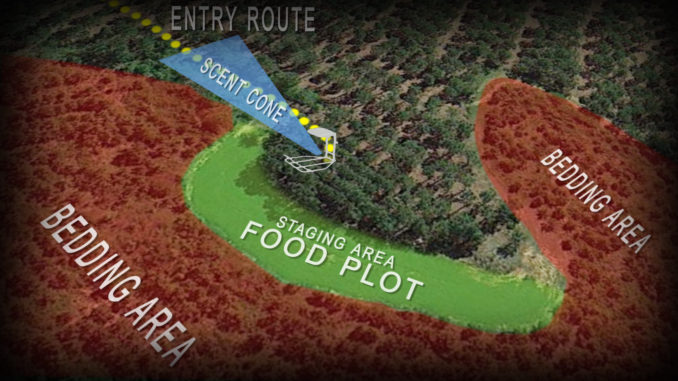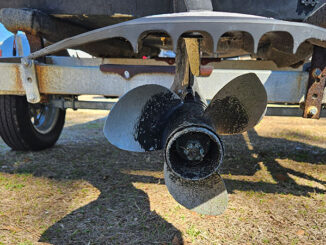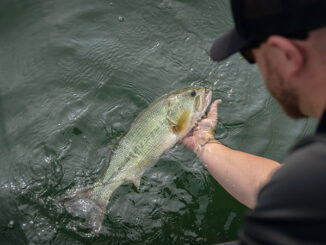
The bigger, the better
How big should a food plot be in order to be effective? How many acres of food plots are needed to be effective? It depends on the situation and one’s budget. Hunter’s cannot plant too much food for wildlife. But they can certainly plant too little.
Deer consume between 2 and 5 pounds of food per day, depending on their body mass and the time of year. Fortunately, deer in most of the areas of the Carolinas rarely encounter prolonged starvation. The widespread agriculture practices and quality native habitat littered with mast and adequate vegetative-forage communities ensures they have plenty to eat. The ratio of wildlife abundance to food availability fluctuates regionally and locally. That will often lead to seasonal migrations when certain food sources sprout.
Local migrations can be fabulous for property owners littered with food caches. But for landowners lacking significant food sources, it’s a bad day when the deer pick up and move to an adjacent club. Deer will cross property lines to find more substantial groceries, and it happens very frequently.
Make your land more appealing than surrounding properties
The amount of food-plot acreage needed will be a function of the quality of natural habitat and the deer population. Even when deer have plenty of food, an adjacent property with a better-tasting food source may also pull deer away. This happens frequently along the agriculture belt, where peanuts and soybean crops blanket the landscape.
So, how many acres of food plots are considered sufficient? It depends on how much natural food and agricultural foods are available, as well as deer density. Obviously, more food will be required to sustain a larger population of animals. According to most experts, 5 to 10 percent of the property should be cultivated in food plots to keep deer fat, happy and within the property boundaries. When abundant natural food or nutritious cultivated crops are available, fewer food plots are needed to keep deer grounded.
Food plots are intended to provide supplemental nutrition for wildlife and shouldn’t be the only type of food source available. But, more is always going to be better when it comes to planting food plots.




